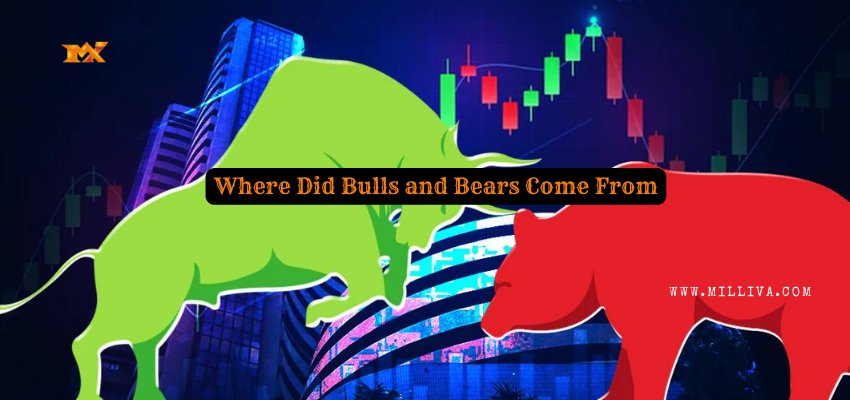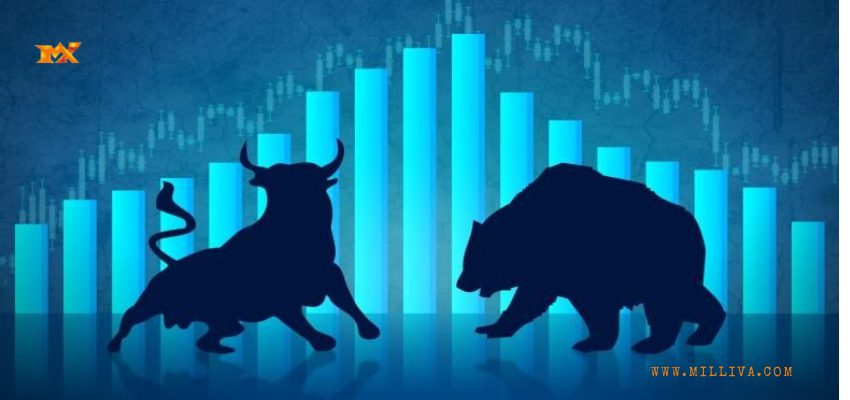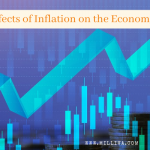Where Did Bulls and Bears Come From

![]()
In this blog let’s see about from where did this bulls and bears came from and how these two animal imagery caught on to be a vital part of the financial markets until today. Both the terms ‘bulls’ ‘bears’ are integral to the financial markets, they remember us the general actions and attitudes or emotions of an individual or the market.
Buyers and markets which are rise in price is known as Bulls. Where buyers and markets which are in decline in price is known as Bears. Many traders at the beginning of their trades they like jargon. But many people are not so familiar with the histories behind these terms.
The very first connotation is due to the way each animal attacks its prey. When the bear swipe down, a bull will thrust its horns up into the air.
Where Did Bears Come from?
According to the history bears came first. Bears are refer to the middlemen those who sells the bearskin. As you think the reason behind the name is not as straightforward. It refer to selling of the skin that were yet to be receive.
As the middlemen will speculate on the future prices of these skins from the trappers, hoping that they would drop. Bears became shorthand for bearskin jobbers and also became a term describing a downturn in the market.
The South Sea Bubble a famous English scandal later confirmed the usage. The name came from the South Sea company, which was evolve in early 18th century. To make trades with Spanish colonies in the New World. Once the king became the governor of the company, its stock became highly desirable. Stockholders were enjoying high returns in a nutshell, and the company assumed most of the British national debt.
Thus thy convinced investors to give up state annuities for company stock, which was sold at high premium. Simply rather unfortunate for most investors. As the stock price suddenly collapsed and most of the speculators had been selling the stock without actually owing it. After this the term widespread use of the term ‘bear.’
Where Did Bulls Come from?
At the same time ‘bull’ made its first appearance on the market, as a counter to the bear. This term refers to speculative purchase in the expectation. That the price would rise has its origins in ancient matches where bears and bulls where fierce opponents. In London in Elizabethan era and also in ancient Rome, both bull and bear were put into an arena to fight one another.
Bull Market
A bull market is when the buyers are optimistic about the rise in price of the shares. Whereas the time when the share prices are rising. Because the economy is doing well, rise in GDP, and the unemployment level is low. It gives confidence for the investors. That the share prices will rise and they tend to buy more shares in the market. The investor who buy share at this time is “Bull.”

Bear Market
In bear market the buyers are pessimistic about the rise in the prices of the shares. And the sellers outnumber the buyers in the market. Bear market is due to the economy not doing well, the fall in GDP, high in unemployment, and there is a fair chance that recession is approaching. When the investor are pessimistic, they to sell their share rather than buy new one and that are “Bear.”
What Drives the Bull and Bear Markets?
Because of many economic and social factors, the Indian stock market is affect. Rising economy, employment levels are high, increased GDP, stable economic and social factors help build the confidence of the investors to invest money in the share market. This is the cause of rise in Bull market. And also the, the new technologies and companies that encourage the investors to invest money in stocks can also create a bull market.
On the other hand, deteriorating economy, decreasing employment levels, falling GDP and socially unstable, and economic factors reduces the confidence of the investors and force then to sell their shares to reduce their losses. This leads to fall in price f shares and a bear market is establish. Companies start to downsize when the economy falls. Increased level of unemployment makes investors far less willing to invest in the market. This is time they really want money, so they sell their shares and create a bear market.
How to Predict Bull and Bear Market?
‘History repeats itself’ and ‘What goes up must come down’ is one of the easiest way to predict bull or a bear market. If the current market’s share prices are rising, you know that they will fall in the future. And a bear market will be establish. If the prices are falling in the current market, you can be confident eventually. again the share price will rise and bull market will be establish.
So you can predict precisely when a Bull and Bear market will be establish, certain things can affect a current market and drive it to change its course. When a country wages a war bullish market will be establish. It would provide more jobs and the investors will feel confident if they think they will win. If the economies are affect negatively a sudden international crisis will always create a bearish market.
Simply if the positive news on the contrary creates a bullish market. Whereas negative news about a company having huge market capitalization affects the market negatively and creates a bearish market.
Final Thoughts
The time when demand is high than the supply of share and result in the increase in share price is known as bullish market. In bearish market a time when the supply is higher than the demand for the shares and results in the fall of the prices of the shares. It is wise to buy more shares during a bearish market as the shares are available for cheap and sell their shares during a bullish market as more people are looking to buy during this time and you can sell your shares at a higher price and book a profit.

Visit us on: www.milliva.com





